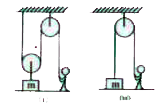A boy learns typewriting and harmonium at the same time. He finds harmonium more easy to learn. This is
Conditioned reflex
Short term homeostasis
Long term homeostasis
Residual learning
The correct Answer is:A
To solve the question, we need to analyze the situation where a boy is learning typewriting and harmonium simultaneously and finds harmonium easier to learn.
1. Understanding the Learning Context: The boy is learning two skills at the same time: typewriting and playing the harmonium.
2. Identifying the Skills: Typewriting is a skill that requires fine motor skills and muscle memory, while playing the harmonium involves musical skills, coordination, and perhaps prior experience with music.
3. Assessing Ease of Learning: The boy finds the harmonium easier to learn compared to typewriting. This could be due to several factors such as prior exposure to music, interest in music, or the nature of the skills involved.
4. Exploring Psychological Concepts: The question presents four options related to learning and reflexes:
- A) Conditional reflex
- B) Short-term homeostasis
- C) Long-term homeostasis
- D) Residual learning
5. Defining Conditional Reflex: A conditional reflex (or conditioned reflex) is a learned response to a stimulus that occurs through repeated exposure. For example, if a person practices a skill repeatedly, they may develop a conditioned response that makes that skill easier to perform.
6. Applying the Concept: Since the boy finds harmonium easier, it suggests that he may have developed a conditioned reflex towards playing the harmonium, possibly due to previous experiences or the nature of the task being more aligned with his skills or interests.
7. Conclusion: Given that the boy finds harmonium easier to learn, this aligns with the concept of a conditioned reflex, where repeated practice and exposure lead to an easier learning experience.
Final Answer:
The correct answer is A) Conditional reflex.
---
- A) Conditional reflex
- B) Short-term homeostasis
- C) Long-term homeostasis
- D) Residual learning
The correct answer is A) Conditional reflex.
Similar Questions
Knowledge Check
He learned all there was
To learn about not launching out too soon
And so not carrying the tree away
Clear to the ground. He always kept his poise
To the top branches, climbing carefully
With the same pains you use to fill a cup
Up to the brim, and even above the brim.
'He learned all there was to learn' expresses that:Aswinging the birch is not just a gameBswinging is a strenuous activityCswinging is fraught with challengesDswinging birches teaches a bitter lessonGordon recently learned that his shadow is proportional to his height. He also learned that the shadows of other objects are proportional to their height. At three o'clock, his shadow measured 4 feet and the shadow of the tree in his front yard measured 18 feet. If Gordon is 6 feet tall, how tall is the tree ?
A108 feetB72 feetC27 feetD24 feet
A man has 8children to take them to a zoo. He takes thre of them at a time to the zoo as often as he can without taking the same 3 children together more than once. How many times will he have to go to the zoo? How many times a particular child will to to the zoo?
View SolutionA sum of rupe 4,0000 was lent for one year at 16% per annum . If the same sum is lent for the same time and at the same rate percent but compounds half-yearly , how much more will the interest be?
View SolutionTwo particles are in SHM along same line with same amplitude A and same time period T. At time t=0, particle 1 is at + A2 and moving towards positive x-axis. At the same time particle 2 is at −A2 and moving towards negative x-axis. Find the timewhen they will collide.
View SolutionA father with 8 children takes 3 at a time to the Zoological Gardens, as often as he can without taking the same 3 children together more than once. The number of times he will go to the garden, is
View SolutionA man standing on a moving escalator, completes a certain distance in time t1. If the escalator does not move then man covers this distance in time t2 by walking.
(i) How much time will he take to cover the same distance if he move on the moving escalator in the same direction ?
(ii) How much time will he take to cover the same distance if he move on the moving escalator in the opposite direction ?
View SolutionThe block has to be raised to a height L in the same time t. In which case force required is more ?

View Solution